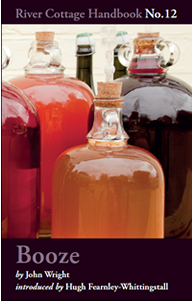Backyard Brewing
With brewing surging in popularity; Camra’s 2013 Good Beer Guide listing over 1,000 breweries, the most in its history and even Barrack Obama brewing his own White House beer only a few weeks ago I thought I’d go back to basics and home brew beer; inspired by Thornbridge Brewery and Nicholson’s pubs competition to find the best home brewed beer in the UK ‘The Great British Home Brew Challenge 2013’. There are six different beer categories to brew under ranging from milds to bitters, porters and speciality beer. Their website goes into depth about the parameters so I’d recommend you read through before buying your ingredients. If you’re thinking about entering that is! If you just fancy a go and it’s your first time I’d recommend to use an app like BJCP (it’s currently free) which covers all beer style descriptors and start from there to build up to your final choice.
Taking a few steps back and being honest here, it’s only my third time brewing. But as good things normally come in three or at least as Bob Dorough sung about in 1973 ‘Three is a Magic Number’, or De La Soul interpolated in 1989 and Blind Melon covered in 1995 – it could be a good sign from that ancient mystic trinity. I’d like to get all fancy here and say beer is made up of three ingredients but it’s more like four which includes water, malt, hops and yeast. Then there are other things like adjuncts, sugar and once you’ve mastered the traditional principles you can start experimenting and pretty much adding any type of spice or herb you like or even woodchips, so I’ve heard, to build flavour.
Now there are three main events that happen in brewing beer, firstly the conversion of starches and carbohydrates to sugars; secondly the conversion of those sugars to alcohol and thirdly creating the ‘magic’ by adding hops (and adjuncts) which add the flavour and preserving effect. There are also three main areas to get right and to ensure you’ve got a drinkable brew at the end - cleanliness, water and storage. Wow some things do come in threes.
After reading through the descriptions, researching recipes ideas via a first-rate book called ‘The Homebrew Handbook’ (by Dave Law and Beshlie Grimes) and checking out ingredients online I decided to plump for two beers both in the speciality beer category. I’m going to attempt to brew spiced ale, as it’s coming up to Christmas and a honey porter in a vain stab at recreating one of Obama’s White House brews. Porter is one of my favourite beer styles with its dark roasted and chocolate flavours. It’s always good to sample a few beers in the style you’re going to brew, call it research.
In the porter style there’s some great examples from Saltaire Brewery’s ‘Hazlenut Coffee Porter’ to Marble’s ‘Chocolate Marble’ to Anchor Brewing ‘American Porter’ to Acorn Brewery’s ‘Old Moor Porter’.
I’ve ordered my ingredients from the home brew shop and am now waiting for the box of goodies to drop on my doorstep. So while I wait here’s a basic guide to the equipment that should get you through your first kitchen brew. I always advise on the first brew to use a kit, it’s an easier introduction than going straight into an all grain brew. However I’m going to take it as read you’re onto your second or third brew here as you’ve read past the second paragraph, so you must be interested in beer!
Now just to do a bit of a Marty McFly and travel back a few months - start collecting your empty beer bottles, make sure you rinse and turn upside down straight after finishing your last drop. Then store in an airtight container. Otherwise you'll spend hours trying to clean minute bits of mould from the bottom corner of the bottles which will send you stir crazy and may make you crossed eyed. Ideally keep the brown bottles, larger size (500ml). Other items you will need, that you might not already have in your kitchen, include:
• Stainless steel brew pot: Ideally four or above gallons, with a lid. I found mine in a local Indian supermarket at the best price.
• Five-gallon (20-25 Litres) x two plastic buckets (one with airlock). You will use these as a fermenter and bottling vessel. You can buy glass carboys; I just went for plastic buckets as it cuts down the risk for me to break anything. I sourced from my local home brew shop.
• An airlock: Allows carbon dioxide to escape from your fermenter (produced during fermentation)
• A racking cane and vinyl siphon hose that fits over the end of the cane.
• Secondary fermenting vessel - I use collected beer bottles & ask friends to save theirs. After a couple of months you should have enough, I reckon 50 should cover. You can use a carboy, or other vessels.
• A bottle capper and crown caps: Home brew shop. The bottle capper's a good investment, you'll use again and again. Mine only cost £15.
• Sterilser, for use as a sanitiser. ESSENTIAL.
• Measuring cup, large spoon for stirring, large funnel (if fermenting in a carboy), a large strainer (helps make your brew day not to be an absolute nightmare when using leaf hops), hydrometer and metal thermometer.
• Your brew ingredients of course - hops, malt, water, yeast!
You can find these items at your local homebrew shop, online and down your local curry mile. The next instalment will go into the brew day detail and by them I should be either half way through, bottling or onto the second batch, erm, I hope. Till then I’ll just finish this beer.







Comments